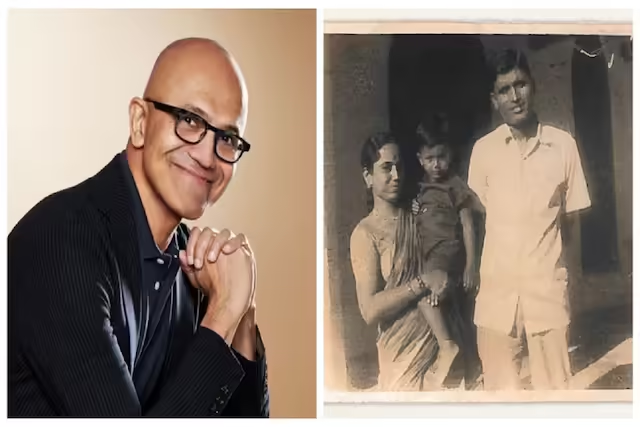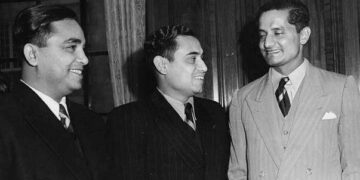Narendra Modi (English: Narendra Modi, born: 17 September, 1950) is the current Prime Minister of India. Narendra Modi is a famous leader of the Bharatiya Janata Party and former Chief Minister of Gujarat. Narendra Modi became the Chief Minister of Gujarat after the resignation of ‘Keshubhai Patel’. Narendra Modi is the longest-serving Chief Minister of Gujarat.
Narendra Modi was the Chief Minister of Gujarat continuously from 7 October 2001 to 21 May 2014. In the 2014 Lok Sabha elections, Narendra Modi was declared the Prime Ministerial candidate from India’s leading party Bharatiya Janata Party and he contested from Varanasi, the cultural city of Uttar Pradesh and Vadodara parliamentary constituency of his home state Gujarat and won the elections from both places by a huge margin. Narendra Modi Narendra Modi was born on 17 September 1950 in Vadnagar, Gujarat in a middle class family of Other Backward Classes. He is the third of six children of Damodardas Mulchand Modi and his wife Hiraben. He has been associated with the Rashtriya Swayamsevak Sangh since childhood and was inclined towards politics since his adolescence. Narendra Modi is a strict vegetarian person. As a youth he was associated with the Akhil Bharatiya Vidyarthi Parishad, but even before that, during the Indo-Pak war in the sixties, teenage Narendra Modi was active as a volunteer helping soldiers passing through railway stations.
As a teenager, he also ran a tea stall with his brother. He completed his schooling in Vadnagar. Later, he obtained a master’s degree in political science from Gujarat University.[1]
Narendra Modi had to face many hardships and adverse circumstances since his childhood but with his great character and courage he turned all obstacles into opportunities, especially when he joined college and university for higher education. In those days he was surrounded by tough struggles and intense mental anguish, but he always fought the battle of his life like a warrior. After moving forward, he never looks back, and defeat is also not acceptable to him. Due to these characteristics of his personality, he completed his M.A. in Political Science.[2]
In 1984, he started his life as a volunteer of the country’s famous socio-cultural organization, Rashtriya Swayamsevak Sangh (RSS). It was here that he got the opportunity to internalize the ideas of selflessness, social responsibility, dedication and patriotism. During his Sangh work, Narendra Modi has played important roles on many occasions. Be it the movement against corruption in 1974, or the extremely oppressive ‘Emergency’ that lasted for 19 months (June 1975 to January 1977).
In 1987, he entered the mainstream of politics by joining the BJP (Bharatiya Janata Party). Within just one year, he was promoted as the state general secretary of the Gujarat unit. By then, he had earned a reputation as a very efficient administrator. He also accepted the challenging task of organizing the party and infusing new energy into it. During this time, the party gained political momentum and in April 1990, a coalition government was formed at the Centre. Although this coalition lasted only for a few months, in 1995, the BJP came to power in Gujarat on its own strength by securing a two-thirds majority. In 1998, the party’s biggest leader Lal Krishna Advani then asked him to take charge of the elections in Gujarat and Himachal Pradesh.
Modi became a full-time RSS pracharak during his university education. Later, he united the party workers in the state and along with Shankar Singh Vaghela, created a strong base of BJP workers in Gujarat. While Vaghela was considered a mass leader in the early days, Modi was known as a skilled strategist. In April 1990, the party got a chance to form a coalition government at the centre. The government at the centre may not have lasted long, but in 1995, the BJP secured a two-third majority in Gujarat. Lal Krishna Advani entrusted Narendra Modi with two important tasks. One was to prepare for the Rath Yatra from Somnath to Ayodhya. A similar second march was planned from Kanyakumari to Kashmir. After Shankar Singh Vaghela left the party in the state, Keshubhai Patel was made the chief minister and Narendra Modi was sent to New Delhi as the party’s general secretary. But in 2001, the party chose Narendra Modi as Keshubhai’s successor. Narendra Modi won the election and remained the chief minister of Gujarat. Then he led the party to victory on 122 seats out of 182 assembly seats in the state. Since then Narendra Modi has been the Chief Minister of the state. In the 2012 assembly elections in Gujarat, Narendra Modi’s magic worked and he succeeded in keeping his party in power. From Maninagar seat, he defeated Congress candidate Shweta Bhatt (wife of IPS officer Sanjiv Bhatt) by more than 86 thousand votes. As the Chief Minister of the state, Narendra Modi has visited China, Singapore and Japan to attract investment from abroad.[1]
Narendra Modi was given the command of the 2014 Lok Sabha election campaign by the BJP Working Committee in Goa. In the Parliamentary Board meeting held on 13 September 2013, he was declared the Prime Ministerial candidate for the upcoming Lok Sabha elections. On this occasion, the top party leader Lal Krishna Advani was not present and the party president Rajnath Singh made the announcement. After being declared the Prime Ministerial candidate, Narendra Modi handed over the command of the election campaign to Rajnath Singh. After Narendra Modi was declared the Prime Ministerial candidate, Modi’s first rally was held in Rewari city of Haryana state. While addressing the rally, he said in clear words that India, Pakistan and Bangladesh should fight poverty and illiteracy instead of fighting among themselves. As an MP candidate, he contested the election from two Lok Sabha seats of the country, Varanasi and Vadodara, and won both the constituencies with huge votes.
Narendra Modi has returned to power once again by getting a huge majority in the Lok Sabha elections 2019. While the NDA had got 336 seats in the 2014 elections, in the 2019 elections, the NDA got 353 seats. BJP alone has got 303 seats in this Lok Sabha election, which is far ahead of the majority figure. This is the second consecutive time that a party has got majority alone. He took charge of the post of Prime Minister of the country for the second time by taking oath on 30 May 2019. Modi has been elected MP from Varanasi Lok Sabha seat for the second time.[3]
After being declared the prime ministerial candidate by the Bharatiya Janata Party, Narendra Modi toured the whole of India. During this time, he travelled 3 lakh kilometers and conducted a total of 5827 programs including 437 big election rallies, 3-D meetings and discussion over tea etc. He started the election campaign on 26 March 2014 from Jammu with the blessings of Maa Vaishno Devi and concluded it in Mangal Pandey’s birthplace Ballia (Uttar Pradesh). After independence, the people of India conducted an amazing election campaign.
Under the leadership of Narendra Modi, the Bharatiya Janata Party achieved unprecedented success in the 2014 elections. In the elections, while the National Democratic Alliance (NDA) emerged as the largest parliamentary party by winning 336 seats, the Bharatiya Janata Party alone won 282 seats. The Congress was reduced to only 44 seats and its alliance had to be satisfied with only 59 seats.
Narendra Modi is a person born in independent India who was the 14th Chief Minister of Gujarat for about 13 years from 2001 to 2014 and became the 15th Prime Minister of India. It is also a historical fact that the opposition will have to unite for the election of the Leader of the Opposition because no single party has even touched the figure of 10 percent (54 seats) of the total Lok Sabha seats.
On 20 May 2014, when people were entering a joint meeting of the BJP Parliamentary Party and its allies organised by the Bharatiya Janata Party in the Parliament House, Narendra Modi bowed down to the Parliament House before entering, just as devotees bow down in front of a holy temple. By doing so, he set an example for all the parliamentarians in the history of the Parliament House. In the meeting, Narendra Modi was unanimously elected the leader of not only the BJP Parliamentary Party but also the National Democratic Alliance (NDA). After all the allies, including the BJP, submitted letters to President Pranab Mukherjee, when Narendra Modi went to the Rashtrapati Bhavan to meet the President, Pranab Mukherjee welcomed him and congratulated him for winning with a huge majority. On his return from the Rashtrapati Bhavan, the President formally handed over a letter to Narendra Modi appointing him as the 15th Prime Minister of India.
Narendra Modi took oath as Prime Minister on Monday, May 26, 2014 at 6 pm. Speaking on being elected as the leader of the BJP Parliamentary Party in the Central Hall of Parliament, Narendra Modi assured the people of the country that he will fulfill the responsibility entrusted to him today with utmost dedication and hard work. On this occasion, he also said that his government will work with full dedication for the upliftment of the poor, villagers, Dalits, exploited and deprived. Hardworking, dedicated and determined Narendra Modi has come as a ray of hope for the dreams and aspirations of 100 crore Indians. His keen eye on development and his proven ability to achieve results have made him one of the most popular leaders of India. He is determined to build a nation that is strong, prosperous and inclusive and where every Indian can see his hopes and aspirations come to fruition. Narendra Modi has made his mark in India and across the world as the Chief Minister of the western state of Gujarat for the fourth time. In this state he brought about a huge change in the lives of the people through people-friendly good governance where the government served the people with simplicity and honesty. He transformed Gujarat, which was reeling under the consequences of a devastating earthquake, into a leader in development that contributed strongly to the all-round development of India.






